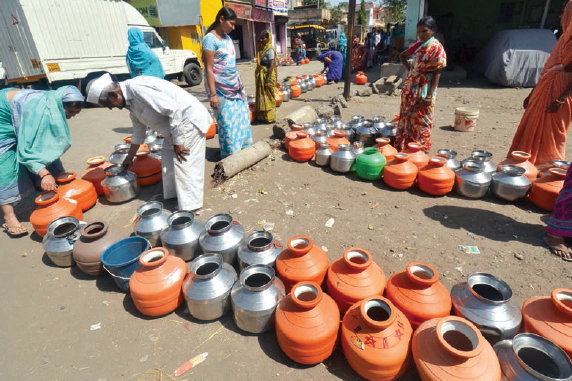
New Delhi : There was a time when the Yamuna accounted for most of Delhi’s water supply. However, recent reports indicate that the oxygen level in the river is zero which means it is literally ‘dead’. Today, this polluted water cannot be used for anything—let alone drinking. Currently, the capital sources much of its water from Haryana and that, too, is threatened. Recent reports indicate that the Haryana government has been curtailing its water supply to the capital.
Delhi’s water requirement is 900 million gallons per day, but it is falling short by about 50 MGD since this May, according to a senior Delhi Jal Board (DJB) official. At this rate, it is predicted that the summer ahead is going to get harder with many areas in Delhi facing an acute water shortage. With groundwater depleted and other small water bodies either dried up or reclaimed by construction companies, Delhi has no natural sources of water.
Rainwater harvesting would be an option, however, the city, notwithstanding the recent showers, is not receiving enough rain. Water tankers supplying water in parched areas are hardy reliable. Not to mention, they are often unaffordable. When faced with water issue, people often resort to tapping sources that are not entirely safe. A data released by One Drop project estimates that over 805 children have died because of water-borne health hazards.
Similar water crisis may be witnessed in many other cities. In fact, water shortage is a reality in many countries across the world. It was reported that recently Nagpur faced a huge water crisis, where the state water resources department closed supply for 15 days in three phases of five days each between January 20 and March 10. Since it takes 65 days for the water to be redistributed after a shutdown, the impact has been envisioned as long-term—two-three months.
This despite a sophisticated water distribution system.
In Mumbai, the situation is merciless, whether it is south or the suburban areas, water crisis is an ongoing malaise. Whether it is a bust pipe, or the water supply being shut off by the Brihanmumbai Municipal Corporation, the condition does not improve for its billions of population. In fact, things have become more alarming.
In the Maximum City, more than the shortage of water, it is about the mismanagement and lack of infrastructure. The pipeline network in the city is over 100 years old and there is illegal tapping of the same. While there is no dearth of rains in Mumbai, the water instead of being stored, floods the logged roads. This leads to incidences of deaths. In the outer-lying areas of Maharashtra, women have to walk for three hours to fill pots of water.
In south India, the issue is far worse. Five states currently face a severe draught. While Kerala, Karnataka and Tamil Nadu are already reeling under severe drought, Andhra Pradesh and Telangana are on the brink. Inclement weather conditions are adding to the shrinking of water bodies. Reports predict that temperatures will soar to 50 degrees. Meanwhile, water wars are being waged over the Kaveri and the Godavari.
Inadvertently, most droughts are man-made. Vast deforestation, re-claiming water bodies, overpopulation of cities and poor maintenance of infrastructure have resulted in a massive shortage of water across our country. And while big packaged drinking water companies may be melting the ice caps to bring you ‘crystal clean water from the Himalayas’, there are many who cannot afford to drink clean water or even take a decent bath.
(Archana Dalmia is the Chairperson of Grievance Cell, All India Congress Committee)
Source: The New Indian Express

Leave a Reply